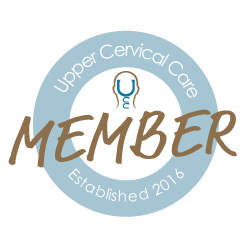Trigeminal neuralgia (TN) is a neurological condition that causes sudden, severe facial pain, often described as sharp, stabbing, or electric shock-like. It can be debilitating, significantly impacting a person’s quality of life. If you are experiencing recurrent, intense facial pain, it’s crucial to seek proper diagnosis and treatment as soon as possible. A trigeminal neuralgia diagnosis is the first step in identifying the root cause of the pain and determining an effective treatment plan.
What Is Trigeminal Neuralgia?
Trigeminal neuralgia is a chronic pain condition that affects the trigeminal nerve, one of the largest nerves in the head. This nerve is responsible for sensation in the face, including sensations like touch, pain, and temperature. It has three branches:
- Ophthalmic: The forehead, eyes, and scalp.
- Maxillary: The cheeks, upper jaw, teeth, and gums.
- Mandibular: The lower jaw, teeth, gums, and parts of the tongue.
When the trigeminal nerve becomes irritated or compressed, it can cause sudden, severe facial pain. The pain typically occurs in the areas served by one or more of the nerve’s branches and can last from a few seconds to a few minutes. Episodes of intense pain can be triggered by simple routine activities like brushing teeth, talking, eating, or even a cold breeze on the face.
Trigeminal Neuralgia Diagnosis: The First Step to Relief
Diagnosing trigeminal neuralgia can be challenging because the symptoms are similar to those of other facial pain conditions. A trigeminal neuralgia diagnosis usually involves a comprehensive evaluation, including a detailed medical history, a physical examination, and diagnostic imaging to rule out other causes of the pain.
Here are the main steps involved in the diagnostic process:
1. Medical History and Symptom Review
The first step in diagnosing trigeminal neuralgia is for your healthcare provider to gather a thorough medical history. They will ask you about the onset, frequency, and nature of your facial pain. Key questions might include:
- When did the pain first start?
- What does the pain feel like (e.g., stabbing, shooting, electric shock)?
- Which areas of the face are affected?
- What activities seem to trigger the pain?
- How long does each pain episode last?
The doctor will also inquire about any other symptoms you may be experiencing, such as numbness or weakness in the face, or other neurological symptoms.
2. Physical Examination and Neurological Evaluation
After reviewing your medical history, the healthcare provider will perform a physical and neurological examination. During this exam, they will check for any signs of nerve or muscle issues, such as weakness or changes in sensation on your face. The exam also helps rule out other potential causes of facial pain, such as dental issues, sinus problems, or temporomandibular joint (TMJ) disorders.
A key part of the examination involves testing the trigeminal nerve. The doctor may gently tap or touch areas of your face to assess how sensitive you are to stimuli. The doctor will also assess whether there are any other neurological abnormalities, such as changes in reflexes or motor skills, which can help confirm a diagnosis of TN.
3. Diagnostic Imaging
If trigeminal neuralgia is suspected, the next step is usually diagnostic imaging to rule out other conditions. While there is no specific blood test for trigeminal neuralgia, imaging techniques can help identify potential underlying causes of the nerve pain.
- Magnetic Resonance Imaging (MRI): MRI is often the first imaging technique used to diagnose TN. An MRI can detect whether there is compression of the trigeminal nerve by blood vessels or tumors, which are common causes of TN. MRI is also helpful in ruling out other causes of facial pain, such as multiple sclerosis (MS), a condition that can also cause trigeminal neuralgia.
- CT Scan: In some cases, a CT scan may be used, though it is less detailed than an MRI and typically used if an MRI is not available or if further imaging is necessary.
4. Additional Tests (Optional)
In certain cases, additional tests may be ordered to confirm the diagnosis or to rule out other conditions:
- Electromyography (EMG): This test measures electrical activity in the muscles and can help assess nerve function.
- Trigeminal Reflex Testing: This test can help determine how the trigeminal nerve is functioning and may help confirm the diagnosis.
Once all tests have been completed, your doctor will evaluate the results and make a diagnosis. If trigeminal neuralgia is confirmed, the healthcare provider will then discuss the best course of treatment.
Treating Trigeminal Neuralgia With Chiropractic Care
While traditional treatments for trigeminal neuralgia often involve medications (such as anticonvulsants or pain relievers) and, in some cases, surgical interventions, chiropractic care can be an effective complementary treatment to support pain management and improve overall nerve function.
At Anatomy Chiropractic, we approach trigeminal neuralgia through the lens of spinal health and nervous system function. Chiropractic care is based on the premise that spinal misalignments (or subluxations) can interfere with nerve signals and contribute to pain, inflammation, and other health problems. By correcting these misalignments, chiropractors aim to restore normal function to the nervous system and alleviate symptoms.
1. Spinal Adjustments to Improve Nerve Function
Chiropractors specialize in adjusting the spine to alleviate pressure on nerves and restore proper alignment. For individuals with trigeminal neuralgia, spinal misalignments—particularly in the cervical (neck) region—can cause nerve compression, leading to pain in the trigeminal nerve. Through gentle spinal adjustments, chiropractors can reduce nerve pressure, improving communication between the brain and the trigeminal nerve and potentially reducing pain.
By addressing misalignments in the neck and upper spine, chiropractic care helps improve overall nervous system function, which can contribute to long-term pain relief and prevent future flare-ups of trigeminal neuralgia.
2. Reducing Muscle Tension and Inflammation
One of the side effects of chronic pain is increased muscle tension, especially in the neck, face, and jaw areas. This muscle tension can exacerbate trigeminal neuralgia symptoms. Chiropractors often use techniques such as massage therapy, myofascial release, or trigger point therapy to alleviate muscle tightness and reduce inflammation in the affected areas. These treatments can help relieve pressure on the trigeminal nerve, providing relief from pain.
3. Holistic Pain Management
Chiropractic care is a non-invasive, drug-free alternative to traditional pain management approaches. For individuals who are seeking to reduce their reliance on pain medications or avoid invasive surgical procedures, chiropractic care can provide an effective and holistic option. Chiropractors take a whole-body approach to care, addressing not just the symptoms of trigeminal neuralgia but also improving overall spinal health, posture, and nervous system function. This comprehensive approach can improve your overall well-being and reduce the frequency and intensity of pain episodes.
4. Supporting Overall Health and Wellness
Chiropractic care is not just about treating pain—it’s about supporting overall health and wellness. By improving spinal alignment, reducing inflammation, and supporting nerve function, chiropractic care can enhance your body’s innate ability to heal itself. Additionally, chiropractors often provide advice on lifestyle changes, such as posture correction, stress management, and exercise, that can further reduce the risk of trigeminal neuralgia flare-ups.
Take A Step Towards Relief
A trigeminal neuralgia diagnosis is an essential first step in managing this painful condition. Early diagnosis can help you understand the underlying causes of your pain and allow you to explore treatment options that best meet your needs.
At Anatomy Chiropractic, we specialize in helping individuals with trigeminal neuralgia find relief through targeted spinal adjustments, pain management strategies, and a focus on overall nervous system health. If you are struggling with facial pain or have been diagnosed with trigeminal neuralgia, we encourage you to schedule a consultation with our team to discuss how chiropractic care can play a key role in your pain management plan.
Take the first step towards pain relief today. Contact us to learn more about how we can help you manage trigeminal neuralgia and improve your quality of life.


